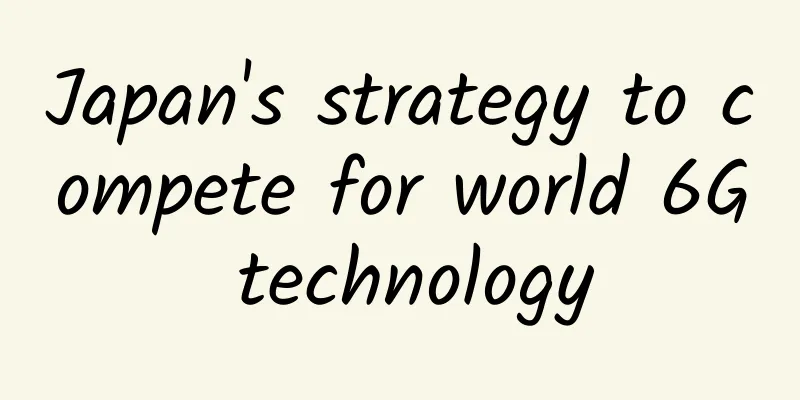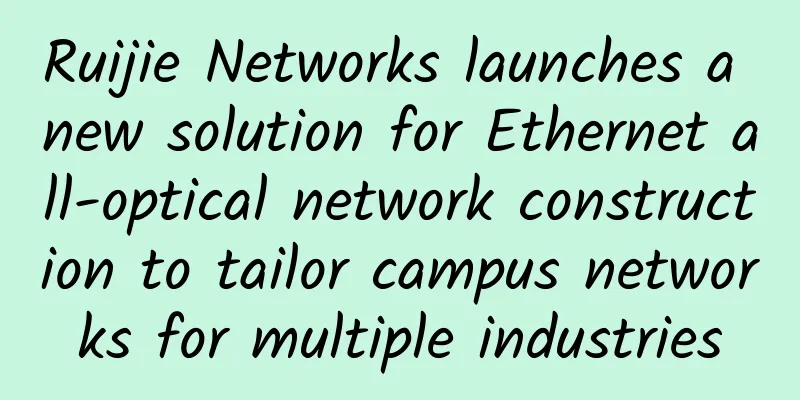Japan's strategy to compete for world 6G technology

|
In March of this year, when the COVID-19 epidemic began to expand, several major Japanese telecommunications companies simultaneously launched 5G communication services. Compared with the United States, South Korea and China, Japan is one year behind in launching 5G communication services. Why has Japan, a country with a large IT communications technology industry, become a laggard in the world in the application of 5G technology? This is because Japanese communications technology companies have a hidden fear of "a snake when seeing a rope". Japan’s 5G crisis Japan has led the world in the field of communications technology many times. In 1993, when the world entered the 2G era, Japan took the lead in developing the "PDC" technology and hoped that it would become a world technology. However, it was defeated by Europe's "GSM" technology. The world market segmentation result was 1:212 (countries and regions). In 1999, when the world entered the 3G era, Japan took the lead in launching the "i-mode" technology that could browse the web, transfer photos and send emails, but it still failed to become a world standard. The reason for the failure was simple: at that time, people all over the world used computers to send emails, and there was no habit of using mobile phones to send emails. Text communication between mobile phones was basically text messages. It was not until the birth of the iPhone that people began to use mobile phones to send emails. Another reason is that 4G technology was launched before i-mode technology was accepted by the world. In February 2012, SoftBank Communications began to launch 4G technology in Japan. From 2G to 3G, and then to 4G, Japanese communications technology companies have spent a lot of money on the research and development of new technologies, but not only have they failed to recover all their investments, they have also suffered a lot of losses. As a result, Japanese companies have lost confidence and interest in 5G technology research and development. “Being the world’s number one does not necessarily mean you will reap the benefits”, which has been the lazy mentality of Japanese communications technology companies in recent years. At present, in the field of 5G technology, semiconductor technology is dominated by Qualcomm in the United States. In terms of communication base stations, Nokia in Finland and Ericsson in Sweden own many patents. Huawei in China has occupied more than 30% of the world market with its advantages of miniaturization and low prices, becoming the world's largest manufacturer of communication base stations. In the field of 5G patents, Samsung of South Korea owns 8.9% of the world's patents, Huawei owns 8.3%, Qualcomm owns 7.4%, and NTT of Japan ranks sixth, accounting for only 5.5%. Japan sensed the serious crisis and decided to give it a try in the field of 6G technology, hoping to turn the tables. As long as we tie ourselves to the United States, we can dominate the world? 6G communication technology is an extension of 5G technology. Its transmission capacity is expected to increase 100 times compared with 5G, and network latency is expected to drop from milliseconds to microseconds. 6G technology not only includes the three core elements of human society, information space, and physical world (people, machines, and objects) involved in 5G, but also includes the fourth dimension element - spirit (Genie). Genie exists in the virtual world system and can achieve communication and decision-making without human participation. Based on AI, edge computing and the Internet of Things, 6G technology realizes the deep integration of intelligent applications and networks, realizes virtual reality, virtual users, intelligent networks and other functions, and provides mobile users with multimedia, networked and all-weather service information services. Japanese companies have learned a lesson from Huawei's suppression by the United States and exclusion by some European countries: "As long as we are tied to the United States, we can dominate the world." In October 2019, NTT and Sony, two of Japan's largest telecommunications companies, signed an agreement with Intel of the United States to jointly develop 6G technology. This joint development of technology between Japan and the United States aims not only to achieve ultra-high-speed communications, but also to achieve two major technological breakthroughs: first, new semiconductor technology driven by light; second, smartphones that can be used for a year on a single charge. According to reports, NTT has developed a semiconductor chip that can be driven by light, requiring only one percent of the current electricity. NTT is collaborating with Sony and Intel to mass-produce this light-driven chip. Japan's KDDI Corporation is also working with Amazon in the United States to place AWS servers and memory storage devices on the network, and perform "edge computing" that processes data at high speed through base stations closer to users. The joint venture between Japan's TDK Corporation and the United States' Qualcomm also announced that it would become a full subsidiary to strengthen the research and development of 6G technology and related products. In January 2020, the Japanese government established the 6G Technology Research Group, which is chaired by Tokyo University President Shinichi Gokami and directly reports to the Minister of Internal Affairs and Communications of Japan. The group began to study and formulate a national comprehensive development strategy involving 6G performance goals and policy and budget support. The strategic plan released by Japan's Ministry of Internal Affairs and Communications in April shows that Japan's 6G communication base station ratio will be greatly increased from the current 2% of the world market share to 30%. The relevant patent share will also be increased from the current 5.5% to 10%. In addition to satellite communications, communication base stations will also be set up in mountainous areas and the sea to achieve full coverage of base stations. The Ministry of Internal Affairs and Communications said that Japan's goal is to complete the research and development of major 6G technologies in 2025, start 6G technology trials in 2027, and officially launch 6G technology in 2030. In order to achieve this goal, in addition to providing subsidies, the Japanese government will also optimize a series of tax policies to create a good R&D environment for enterprises. At the same time, a joint R&D organization integrating industry, academia and research will be established with the National Institute of Information and Communications Technology as the center to lead the establishment of world standards. If we can’t compete with 5G, can we compete with 6G? However, the reality is grim. In the 5G field, China's Huawei and Europe's Nokia and Ericsson already have 80% of the world's market share in communication base stations. There is no doubt that this momentum will continue into the 6G era. It is obviously not an easy task for Japan to get a bigger share of the pie. In November 2019, China's Ministry of Science and Technology, together with the National Development and Reform Commission, announced the establishment of a national 6G technology research and development promotion working group and an overall expert group, and officially announced the full launch of 6G technology research. Huawei has also established a research institute, hoping to take the lead again. South Korea has established a research center jointly established by Samsung and LG Electronics, with the government investing 976 billion won (about 5.5 billion yuan). The Finnish government has also established a 6G research institute. US President Trump also said that the government will fully fund Qualcomm, Intel and other companies to increase their research and development of 6G technology. China's advantage lies in the fact that it not only has large mobile phone manufacturers and markets, but also has communication base station and electronic equipment manufacturers, as well as a strong government-led R&D team. Japan's strategy is that in the field of 5G, Japan will not compete for the finished product manufacturing of equipment, but expand the market share of parts. In communication base station equipment, Japan's electronic parts account for a high proportion, such as LC filters, Murata Manufacturing occupies 50% of the world market. For antenna components, Sumitomo Electric occupies more than 20% of the world market. But in the field of 6G, Japan will not only continue to be the largest provider of parts, but also occupy a larger market in the field of finished products (communication base stations), so that parts and finished products can go hand in hand! Tetsu Kawanishi, a professor of information science at Waseda University, seems very confident about this. He said that the transmission distance of 6G radio waves is only 100 to 200 meters, so it will require more than 10 times the world's population of communication base stations, and a maximum of 100 billion base stations will be needed. 6G base stations are no longer as big as refrigerators, but as big as mobile phones, or even smaller than mobile phones, and can be integrated into home appliances, cars, lighting fixtures, street lights, and neon lights. Therefore, Japan's advanced semiconductor technology will have more uses and will be able to gain a larger share of the world. At present, Japan seems to have two main mature 6G technologies: one is the low-energy optical drive chip technology developed by NTT, and the other is the quantum cryptographic communication system developed by Toshiba. If Japan can't compete in 5G, it will compete in 6G. This is Japan's ambition. As for whether Japan can achieve a turnaround? Technology alone is not enough. It also needs to cultivate more market development capabilities. In this regard, Japan should learn from Huawei. |
>>: How do the three major operators promote cloud-network integration?
Recommend
15,000 Stars! Programmer's "Internet Swiss Army Knife"!
Introduction CyberChef is a web application for e...
Cloud computing has dominated network infrastructure for many years, and it’s time for the 5G era to usher in the next chapter!
[[262785]] Technavio predicts that the applicatio...
How does machine learning help 5G networks?
Machine Learning Machine learning is a field of e...
Qi Chao, Triangle Beast: How to eliminate machines’ misunderstanding of humans
[51CTO.com original article] On July 21-22, 2017,...
How to “prevent” programmers from slacking off at work?
[[344451]] This article is reprinted from the WeC...
5G technology has already approached the Shannon limit, what else can 6G do?
On May 17, China Unicom and ZTE Corporation signe...
South Korea's 5G users will reach tens of millions! It is important to drain the "water"
As the core of the new generation of communicatio...
LOCVPS: Los Angeles VPS 40% off, 1G memory, 30G hard disk, 400GB monthly traffic starting from 22.2 yuan per month
LOCVPS is a Chinese VPS service provider founded ...
[Black Friday] DediPath: 35% off VPS/Hybrid Servers starting at $1.2/month, 1Gbps unlimited traffic, multiple data centers in Los Angeles and other places
DediPath's Black Friday discounts this year a...
Application scenarios are becoming increasingly diversified, and my country is accelerating the development of blockchain technology
my country has the world's largest Internet a...
The wind is about to blow: the first large-scale commercial use of 5G
By 2018, 5G has gone from theory to reality and w...
Five IoT business models that will make you profitable
IoT products have the ability to collect data, cr...
Pivo: $5/month KVM-4GB/40G SSD/2TB/Phoenix Data Center
Pivo claims to have started in 1997(?). The merch...
Huawei Cloud 828 Cloud Festival: Cloud Server Flash Sale Starting from 69 Yuan/Year
Huawei Cloud launched a new promotion at the begi...
How do packets and routing tables forward data in the network? Learn in one minute
1. Routing Table When the frame reaches the route...









